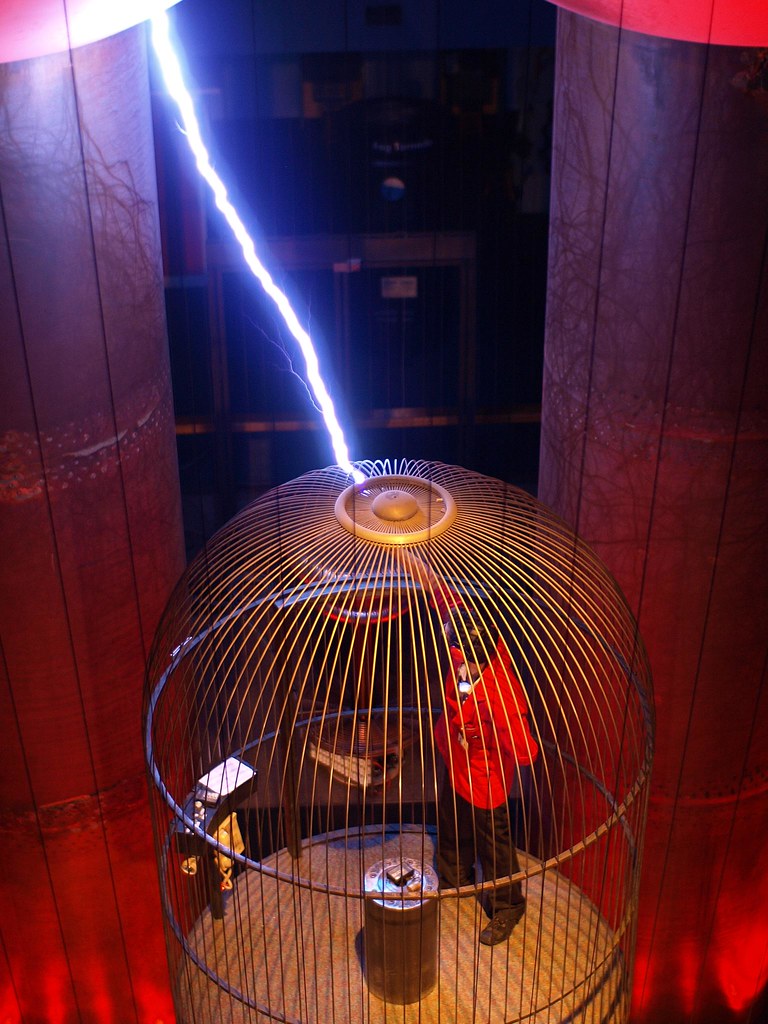What Is a Faraday Cage?
A Faraday cage, also known as a Faraday shield, is an enclosure used to block electromagnetic fields. It is named after the English scientist Michael Faraday, who discovered the phenomenon in 1836. Faraday cages are designed to protect electronic equipment, sensitive instruments, and living organisms from electromagnetic interference. They work by redistributing the electromagnetic charge around the cage, effectively canceling out the external fields.
The History of Faraday Cage
Michael Faraday first discovered the principles behind Faraday cages in the early 19th century. He found that an external static electrical field could not penetrate a hollow conductor, leading to the idea that the charge remained on the exterior of the conductor. This led to the development of the Faraday cage, which is now used in various applications, from protecting sensitive electronic equipment to shielding buildings from lightning strikes. The concept of the Faraday cage has since been expanded upon and is now an essential part of modern technology and safety systems.
Modern Applications of Faraday Cages
In today’s world, Faraday cages are used in a wide range of applications. One of the most common uses is in the design of electronic devices, such as smartphones and tablets. These devices are often equipped with Faraday cages to protect the internal components from external electromagnetic interference. Faraday cage are also used in the construction of buildings and facilities that require protection from lightning strikes or electromagnetic pulses. Additionally, they are utilized in the medical field to shield sensitive equipment from external electromagnetic fields that could interfere with their function.
How Faraday Cages Work
Faraday cages work based on the principles of electromagnetic induction and electrostatics. When an external electromagnetic field is applied to the Faraday cage, the electrons in the conductive material of the cage rearrange themselves to neutralize the effect of the field. This redistribution of charge creates an internal field that cancels out the external field, effectively blocking it from reaching the interior of the cage. This process allows the Faraday cage to protect anything inside it from the harmful effects of electromagnetic radiation.
Design and Construction of Faraday Cages
The design and construction of Faraday cages are essential to their effectiveness. They are typically made from conductive materials such as copper, aluminum, or galvanized steel, which are capable of redistributing electromagnetic charge. The cage can take various forms, from a simple enclosed space to a mesh structure, depending on the specific application. The effectiveness of a Faraday cage depends on factors such as the thickness and conductivity of the material used, as well as the frequency and intensity of the electromagnetic fields it is designed to block.
Benefits of Faraday Cages
Faraday cages offer several key benefits in various fields. In the realm of electronics, they protect sensitive equipment from electromagnetic interference, ensuring their proper functioning. In the medical field, they safeguard critical instruments from external electromagnetic fields that could compromise their accuracy. In the construction industry, they provide protection from lightning strikes, minimizing the risk of damage to buildings and facilities. Faraday cages are also used in research and development to create controlled environments for testing the effects of electromagnetic fields on different materials and organisms.
Future Developments in Faraday Cage Technology
As technology continues to advance, so too will the applications and designs of Faraday cages. Researchers are constantly exploring new materials and construction methods to improve the effectiveness of Faraday cages in blocking electromagnetic fields. Additionally, the integration of Faraday cages into everyday consumer products is becoming more prevalent, as the need for protection from electromagnetic interference grows. The future of Faraday cage technology holds promise for further innovation and expansion into new areas of application, ensuring the continued protection of sensitive equipment and living organisms from the harmful effects of electromagnetic radiation.



